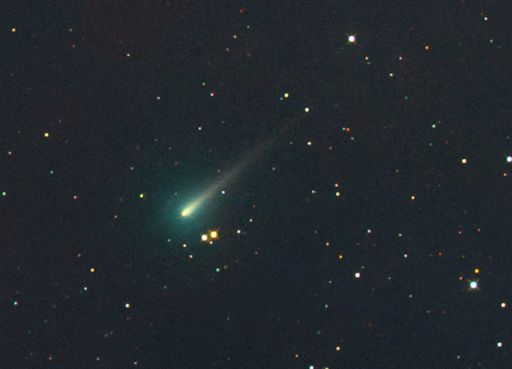COMET ISON IN COLOR: Comet ISON is brightening as it approaches the sun. Estimates by experienced observers put the comet between 10th and 11th magnitude. That's too dim to see with the unaided eye, but bright enough for color photography through mid-sized backyard telescopes. Michael Jäger of Weißenkirchen, Austria, observed the comet on Oct. 5th and found that it was green:

To image the comet, Jäger combined multiple exposures through red, green, blue, ultraviolet and infrared filters. Details may be found here.
ISON's green color comes from the gases surrounding its icy nucleus. Jets spewing from the comet's core probably contain cyanogen (CN: a poisonous gas found in many comets) and diatomic carbon (C2). Both substances glow green when illuminated by sunlight in the near-vacuum of space.
Finding Comet ISON is easy. It rises alongside Mars in the eastern sky just before dawn. Amateur astronomers, if you have a GOTO telescope, enter these coordinates. Sky maps: Oct. 7, 8.
The comet merits watching in the weeks ahead. While many experts believe ISON is on track to become a bright sungrazer in late November, astronomer Ignacio Ferrin of the University of the Antioquia Institute of Physics in Colombia predicts a different outcome. He believes Comet ISON is about to disintegrate. The light curve of ISON, Ferrin argues, resembles those of other comets that have fallen apart prematurely. If he's right, the "Comet of the Century" could turn into a century-class fizzle. Stay tuned to the Comet ISON Photo Gallery for updates.